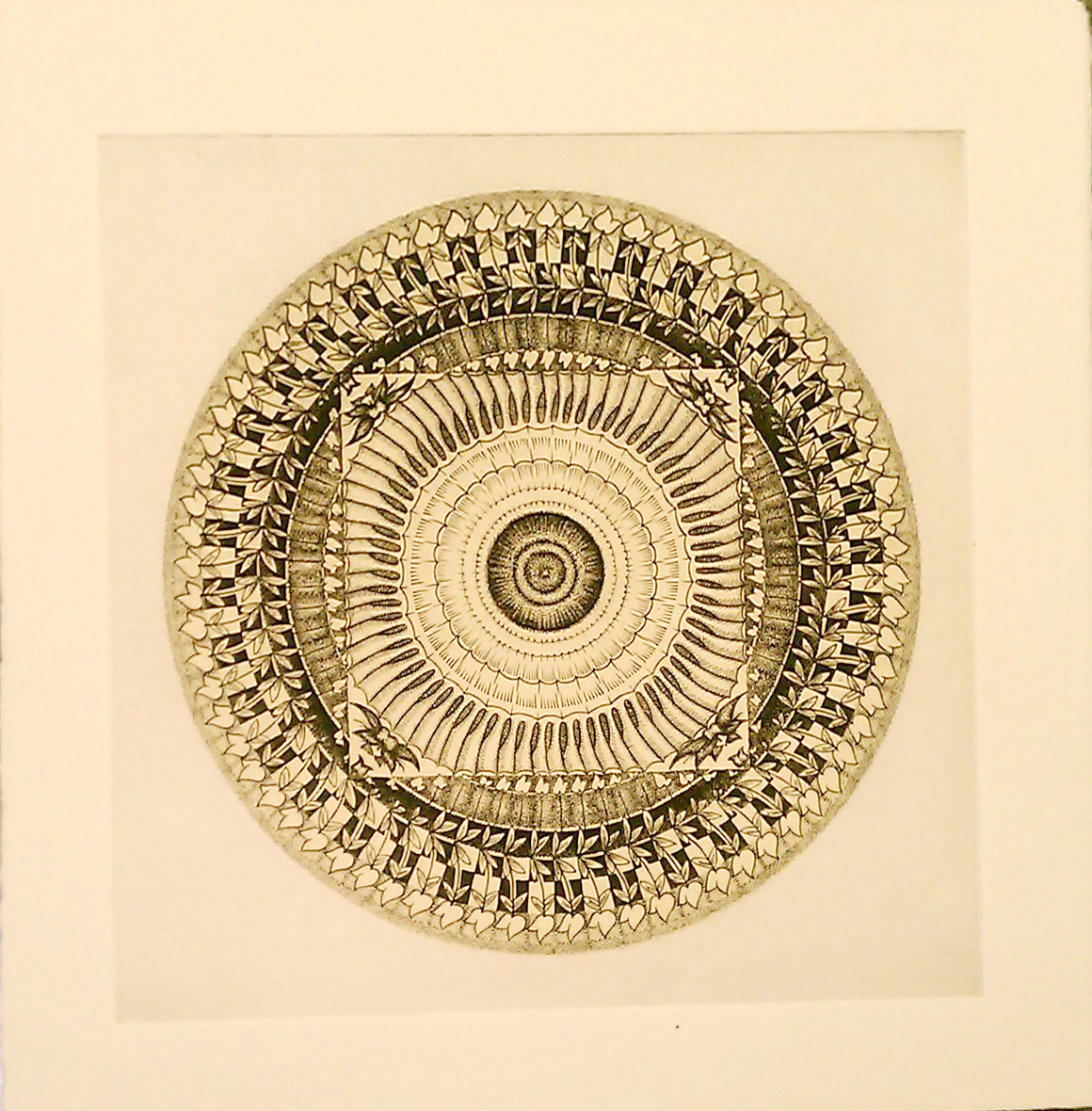

Images are drawn or painted directly onto the stone matrix with an oily material, such as grease pencils. Lithography is based on the simple principle that oil and water do not mix. Lithography is derived from the Greek word for “stone writing.” Unlike relief or intaglio, lithography is printed from an entirely flat matrix: the surface is neither carved nor incised. Heavy pressure pushes the softened paper into the grooves on the plate and transfers the inked image. The paper and plate are covered with special felt blankets and rolled under the press drum. Once inked, the plate is transferred to the press bed, where damp paper is aligned over the plate. The excess ink is wiped from the surface, while making certain to preserve the ink in the image area. To print intaglio, ink is applied to the surface using a squeegee-like card to push it into the crevices. When exposed to acid, these irregular dots help to create soft, continuous tones. With aquatint, small dots made from powdered rosin, spray paint, or acrylic grounds are applied to the plate, acting as a resist to the acid. Etching involves scratching through a wax-based ground that has been applied to the plate and then bathing it in acid.

Etchings and aquatints are made using this method.

The intaglio matrix can also be created by using an acid to make the incised marks. Next, areas are lightened by flattening or burnishing the burrs to create the image. The mezzotint matrix, most often a copper plate, is first systematically roughed up to create burrs with a sharp tool called a rocker. The intaglio method called drypoint involves pulling a burin, a needle-like tool, across the surface of the metal, making soft, fuzzy marks.Įngravings are created by pushing a burin across the plate to remove thin metal ribbons. Marks can be made directly on the surface with several different techniques. Intaglio comes from an Italian term meaning “to cut into.” The image area in the intaglio plate sits below the surface of the matrix: the opposite of relief printing. Intaglio is the umbrella term for a family of techniques that involve incising marks into metal plates-usually copper or zinc-or into an acrylic sheet.
Intaglio techniques registration#
Multiple blocks can be inked with different colors, each printed on top of the same piece of paper, using a registration system to perfectly align the image. Once inked, the image can be printed using a printing press, or rubbed by hand. The image area is on a higher plane than the negative space, making it possible to roll ink onto the surface using a hand-roller, or brayer. Relief prints are made by carving away material from the matrix, often made of wood or linoleum, to create negative space around an image. These techniques can be used alone or in combination with one another to create the desired effects. The matrix is the block, plate, or surface from which the print is taken. Each process has a unique mark or characteristic because of the way the matrix is created. There are three main printing processes: relief, intaglio, and planography, which includes lithography and screenprinting.

Prior to the invention of printmaking methods, creating a reproduction meant painstakingly copying each image or word by hand. Printmaking, known as the democratic medium, revolutionized the dissemination of information through the mass production of images and text.


 0 kommentar(er)
0 kommentar(er)
